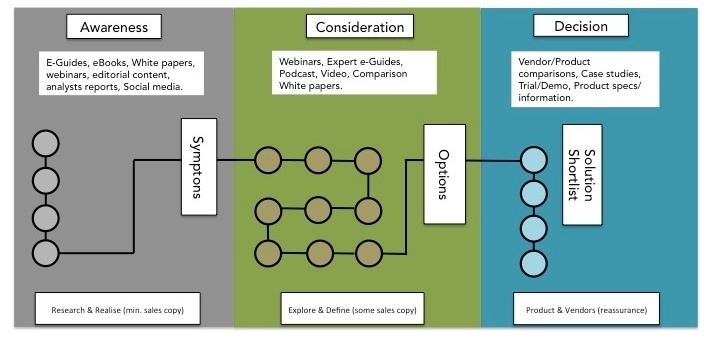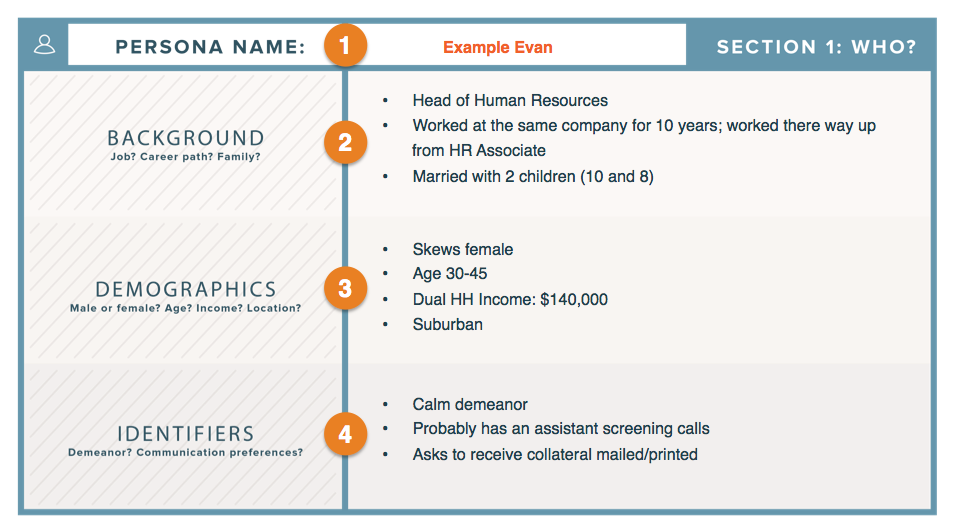Lost in translation the language and strategy of B2B Selling versus Buying.

All too often, companies define their markets in vague terms that fail to really connect sellers with motivated buyers. The problem with hurried target market definitions, weak buyer personas and a “show me the money” attitude is that this has not kept pace with how buyer behaviour has evolved.
The internet has changed pretty much most things in our life today, and it has also played a role in turning the buyer-seller relationship completely upside down.
Today, the information that buyers need to make a purchase decision is just a click away. The power in the buying and selling process has shifted from the seller to the buyer.
But not all businesses have kept pace with this change in power, they still think that it is “buyer beware” – that as the seller you are driving the conversation with the objective of a quick sale.
The sales environment as a whole is witnessing a significant shift from the traditional method of B2B prospecting (outbound) to one that is more buyer-friendly (inbound).
As buyers – before we make a purchase decision, 60% of us rely on Word Of Mouth – friends – social media, 49% on customer references and recommendations, 47% on analyst reports, and 44% on media articles (source HubSpot Inbound Sales Report 2016).
There is a big challenge to shift this sales mindset from a “me focus” to a “buyer-centric” one. In today’s market, the buyer has already progressed considerably along the customer journey by the time they want to interact with the seller – they now control the conversation before, during and after sales – so welcome to “seller beware”.
A Seller’s “Point Of View”
Whereas some businesses may still be in the habit of viewing their prospects as numbers in the sales funnel, the newly empowered buyer can see through this, especially in today’s transparent digital economy. Companies should be looking at how they can transform their sales process to match the way people buy. By shifting your focus and impressing upon buyers the desire to offer advice first and foremost it can help open up the opportunity for constructive dialogue.
In general, buyers do not have available all the details they may need to make a complex purchase, especially something that falls outside their own area of expertise. So there will always be a need to have direct sales contact especially for those buyers involved in a long and complicated sales process such as purchasing technology.
Many buyers have already entered the Awareness stage of the buying journey (see below) before they engage with salespeople but if you cannot add any value to a sales conversation over and above what the buyer can source from self-research on the Internet, then you will have problems.

Educate, Don’t Sell.
“Selling to people who actually want to hear from you is more effective than interrupting strangers who don’t. Seth Godin
Helping is the new selling. The most successful salespeople are the ones who aren’t viewed as salespeople, but who are subject matter experts and add value through advice and sharing knowledge.
As a seller it is common to worry about rejection, nobody likes to hear a “no or … let me think about it…”.
But pushing a prospect prematurely along the sales process will typically end in a missed opportunity, as the buyer may not be ready or just not a good fit. Or if we feel that the sale is slipping through our fingers you resort back to talking up product features or other distinctions that are important to you as a company, but may have no intrinsic value to the buyer.
Instead of focusing on your own needs to close a sale, focus instead on the buyer’s desire to get a problem solved. So talk about the problem.
Start conversations around the buyer’s plans, goals and challenges. Lead with a message targeted to the buyer’s context, what is their pain, what options do they have, what are the consequences if they fail?
Defining your buyer personas is essential to personalising the sales process for today’s empowered buyer (see below example from HubSpot).

When You Are Selling, Don’t Forget What It’s Like To Buy.
Work hard at trying to fathom through questions, research and listening what the perspective of the buyer is. Just because the tables are turned and you are selling now – don’t forget your own experiences of making a purchase.
If you cast your mind back to the last time you had a positive buying experience yourself, I’m sure it was because you felt the sales person really understood you, and put your needs first – rather than their own.
Whether you were buying a pair of shoes, smartphone or a house, what makes a great sales experience stand out is the feeling that you really were the “centre of attention”.
If you have ever found yourself in a sales meeting and realised that you’re the one doing all the talking this is a bad sign, although very common. It’s called ‘pitching.’ It’s natural to pitch—you know your stuff and you want to show that.
Instead of pitching, aim to offer advice. Don’t be thinking about how you can get the prospect to buy from you. Instead think about the ways in which you can help.
It can be tempting even before the relationship is even started to ask about budget, level of urgency or the decision making authority. If you have done adequate research you will know if the prospect fits the right profile and who the relevant stakeholders and influencers are.
So instead try to understand from your contact the typical obstacles or considerations taken into account in their buying process. At an early stage it is more effective to ask questions of your prospect to learn what their challenges are and where they would need help.
Always start with questions that try to develop an understanding of where the business is at, it’s challenges and goals at a strategic level.
A positive rapport will open up more sales opportunities when you think like a buyer. This is less about small talk but more about demonstrating an understanding of your buyer’s situation and providing insights and knowledge for the buyer.
A Buyer’s “Point Of View”
I have to admit when I visit my local bike shop I am always interested in the latest bit of technical kit on display. So I hover, circle and then start to read. Without fail the store assistant will ask: “Can I help you?” Despite me clearly needing help, 9 times out of 10 my answer is “No, I’m just looking.”
It is a pretty common response from a buyer. And to a great extent it is because of a question of trust. Will the assistant really have my best interests at heart or are they looking for a quick sale?
I know that on many other occasions in different shops I have had that negative experience, particularly where you are buying something that is not in your field of expertise. All I am looking for as a buyer is a solution to a problem.
Typically if I am going to buy something, I set a budget, do my research and know exactly what I “thought” I wanted – up until this point I am in control. Now being sold to means someone is trying influence that outcome.
And as a buyer from past bad experiences there is a feeling of doubt, especially when the conversation starts to discuss products that I did not consider, but now I am beginning to feel like I am being sold to, the pressure is being applied and I am not sure whether this is the best advice.
But times now have changed and because of the 24/7 digital world we live in, I do now have a choice and an option to share my opinion and experiences. I can search for information, actual unbiased results and not feel like I am being taken advantage of.
I can already build up a level of trust on a vendor through my self-research, tapping into existing users and asking colleagues. This can help a lot in finding what sets apart one company from another.
With the Internet and the social media revolution there has been pressure applied to sellers to become more aligned with the buyer. Today buyers do not rely solely on messages from salespeople or corporate sources to learn about products and services. This information is readily available online.
With so many touch points now in the sales process the sales cycle is becoming longer and more complicated. So it is important to find a salesperson who you can work with to facilitate a solution with their knowledge to get you through your own buying challenges:
- Budgets are tighter
- Fear of making a bad decision
- Buyers have more options
- More stakeholders involved so an increased level of complexity
- Reaching a consensus is a challenge
- Customers want to interact differently

Take Away
If you are looking for inspiration on how to open a conversation, use our checklist below to get you over the first hurdle and starting to engage.
Engaging conversation – checklist.
- Ask permission – it’s appropriate to show respect by asking permission to ask questions.
- Start broad, and then get specific – open-ended questions are a good way to gather information and put your prospect at ease.
- Build on previous responses – and on your research.
- Use the prospect’s industry buzzwords, if appropriate.
- Keep questions simple.
- Keep questions non-threatening.
- Focus on desired benefits based on your understanding of their needs.
- Maintain a consultative attitude, exude a relaxed tone of voice and wait for responses.
- Don’t be in a hurry to get to your next appointment.
Let us know if you need help moving your conversation from selling to listening.
